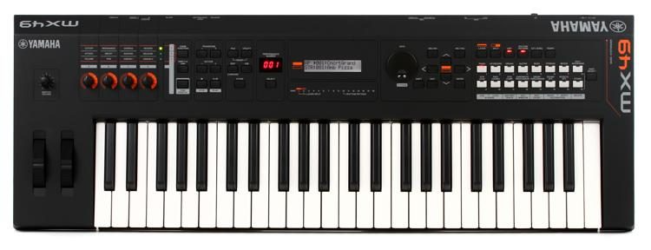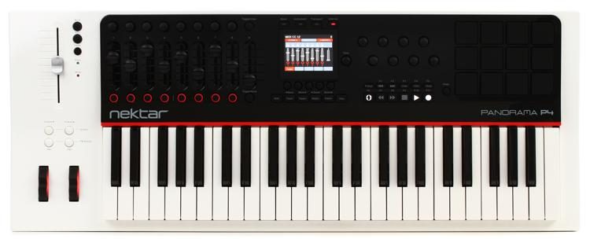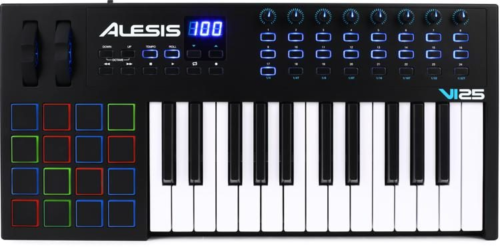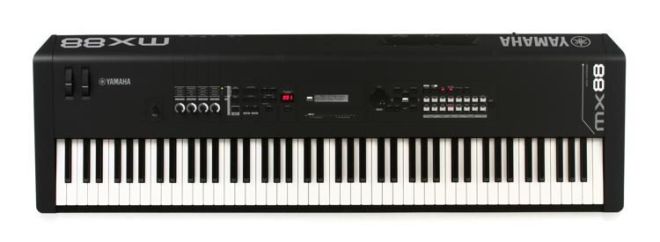In the last 20 years, new technology has taken home recording from an expensive and difficult process to something that successfully gets done in bedrooms, attics, and basements. Some of the work of famous musicians like Skrillex and John Mayer has come into existence in small, home-brewed recording studios. The center of a home recording studio is a MIDI keyboard, a small digital piano that connects to your digital audio workstation, offering unlimited sounds and melodies.
MIDI keyboards, also known as MIDI controllers, are piano-style keyboards that are set up to record pretty much anything from drums to synthesizers to world music. Weighted MIDI keyboards are simply MIDI Keyboards that have key weighting, a feature that makes them play and feel more like a real, analog piano.
- Features to Consider in a Weighted MIDI Keyboard
- Top 10 Best Weighted MIDI Keyboard 2025
- 1. Best Overall Weighted MIDI Keyboard: Novation 61SL MKIII 61-Key Keyboard Controller
- 2. Best Budget Weighted MIDI Keyboard: Alesis V161 61-Key Keyboard Controller
- 3. Best Premium Weighted MIDI Keyboard: Arturia KeyLab 88 MkII 88-Key Keyboard
- 4. Best Offline Weighted Midi Keyboard: Yamaha MX49 Music Synthesizer
- 5. Best Weighted MIDI Keyboard for Beginners: M-Audio Keystation 61 MK3 61-Key Keyboard Controller
- 6. Best Weighted MIDI Keyboard for Keyboard Players: Arturia KeyLab Essential 88
- 7. Best Weighted MIDI Keyboard for DAWs: Nektar Panorama P4 49-Key Keyboard
- 8. Best Compact Weighted MIDI Keyboard: Alesis VI25 25-Key Keyboard Controller
- 9. Best Simple Weighted MIDI Keyboard: Studiologic SL73
- 10. Best Weighted MIDI Keyboard/Synthesizer: Yamaha MX88 88-Key Weighted Action Music Synthesizer
- MIDI Keyboard FAQ
- Guide to Buying the Best Weighted MIDI Keyboard for 2025
- Wrapping Up
Features to Consider in a Weighted MIDI Keyboard
Weighted keyboards range hugely based on design and purpose. On one end, there are super-small keyboards meant to lay down a couple notes in a digital recording, and on the other end there are full-size piano analogs meant to digitally imitate analog pianos. These products vary based on the features laid out below:
Key Weighting Type
Key weighting has to do with two aspects of a keyboard: how it sounds and how it plays. Key weighting affects the sound of the keyboard, which changes based on the strength and velocity of a key strike. It also affects how a piano feels, how fast or gently the keys return to their original position. Different manufacturers use different engineering to accomplish the goal.
That’s a basic rundown, but as it is an important feature for many MIDI keyboard users, we’ll explore the subject a bit more below in our section on Key Weighting.
Weight and Size
Based on the size of your space and how you want to accommodate your setup, you’ll want to consider the dimensions of a keyboard. If you’re frequently transporting your keyboard, you’ll want to think about weight as well.
But size doesn’t just refer to the weight and dimensions of the keyboard, though, it also refers to the actual amount of keys on a particular keyboard. There are several standards for MIDI keyboards, the first ones coming in at just two octaves of keys (25 keys) and going all the way up to full size (88 keys).
Speakers
As MIDI keyboards are primarily designed to plug into a computer, most of them don’t have speakers and rely on audio playback through the computer to play sound. Some MIDI keyboards, fortunately, are designed to also be self-sufficient and thus have built-in speakers. If you want to use your MIDI keyboard as a practice piano as well, get something with speakers, but for musicians doing recording, it’s largely unnecessary.
MIDI Capability
There are two types of MIDI: MIDI In, which allows you to control and modify sounds from the piano, and MIDI Out, which allows you to send MIDI output to a digital audio workstation. Because of the variations available within MIDI, all of the weighted MIDI keyboards on our list are MIDI-out for maximum versatility and efficacy, some have MIDI-in capability.
They’re a key part of any recording musician’s arsenal, and we’ve laid out our top ten favorites below.
Top 10 Best Weighted MIDI Keyboard 2025
1. Best Overall Weighted MIDI Keyboard: Novation 61SL MKIII 61-Key Keyboard Controller
Why we like it:
While it’s a bit pricey, this 3rd-generation MIDI keyboard gets the job done in an updated format with advanced, deep capabilities.
Quick Specs:
- Key Weighting Type:Semi-weighted
- Weight:18.5 lbs
- Keys:61 keys
When going down the specs list of this model, it’s easy to find reason after reason that it represents a fantastic choice as a centerpiece for your recording setup. Primarily, it’s the keyboard’s specific design and deeply featured control setup, along with its direct (and driver-less) compatibility to DAWs. There are a few more minor features to emphasize as well: a design specifically compatible with Ableton Live, an eight by two velocity-sensitive drum pad (both preferred and rare), as well as backlit and customizable controllers.
We understand that this is pretty pricey, especially when you can get something that gets the job done for about $200 bucks (the M-Audio Keystation 61 MK3 61-key Keyboard Controller is a good example of that).
For those that find this just a touch out of their price range, you can pick up a 49-key version of the same keyboard for about $100 less. But part of the reason this tops our list, and part of the reason for its higher price is the internal sequencer. That gives you internal layer capability, great for both live performances and just fooling around with rhythms, patterns, and chords.
Pros
- Internal layering capability helps with live performances
- 49-key, less expensive option available
- Internal layering capability
- Velocity-sensitive eight by two keypad
Cons
- Quite pricey compared with other down-market options
- Other controllers have similar functionality for lower prices
2. Best Budget Weighted MIDI Keyboard: Alesis V161 61-Key Keyboard Controller
Why we like it:
This economical controller has most of the features of premium keyboards and controllers in a cheaper format, although it has to make some sacrifices to get there.
Quick Specs:
- Key Weighting Type:Semi-weighted
- Weight:13 lbs
- Keys:61 keys
Alesis isn’t a brand as well known as Novation, Arturia, or Yamaha, but for every Ferrari out there, there must exist a Toyota. For economy-minded musicians looking for a fully-featured controller, this is that budget product: feature-loaded but more economical.
Similar to premium controllers like the Novation 61SL MKIII 61-key Keyboard Controller, this MIDI controller features aftertouch-equipped semi-weighted keys, a backlit 16-pad drum pad, and assignable knobs. Pitch and modulation wheels also let you play around with sounds whether you’re connected to a DAW or not; you can use this keyboard either live or otherwise.
So if it’s as fully-featured but less expensive than other models, why isn’t it a top pick? The answer: built quality. While the body and keys are pretty sturdy, the controllers, buttons, and drum pad don’t exactly inspire tremendous confidence.
Lastly, a note for musicians who play live: you won’t find many 61-key controllers much more compact than this: weighing in at just 13 pounds and measuring at just over 3.5 feet in length, it’s portable without being ‘shrunk down’ if you’re planning on moving around a lot. That’s just one more reason to choose this product as a frequently touring or budget-oriented musician.
Pros
- Great, fully-featured, economy-minded MIDI controller
- Backlit drum pad, modulation wheels, and controls
- Pitch and modulation wheels
- Portability and compact size makes it good for musicians on the go
Cons
- Build quality is a bit dubious
- Drum pad and controls don’t inspire confidence
Why we like it:
This expensive keyboard has a full 88 keys and works fantastically for concerts, recording, or even practice.
Quick Specs:
- Key Weighting Type:Aftertouch Hammer-Action
- Weight:32.4 lbs
- Keys:88 keys
While many people who use a MIDI keyboard will look for something a bit smaller to use at their desktop, some musicians, songwriters, and recording artists will want a full-size keyboard. This keyboard does a great job at replacing a full-sized analog piano or digital piano, although it becomes many times more capable once connected to a digital audio workstation. It still works independently, though, although as with most MIDI controllers you’ll have to independently connect to separate speakers for non-headphone audio.
The name of the game here, and the reason that it commands a near-$1,000 price tag is a premium feel: most of the sliders and buttons are expensive, even the look feels high-end when compared to other models. With 88 keys, it’s full-sized, meaning it’s an easy pick for anyone looking for a real piano analog. Concert, recording, or even practice, this keyboard can handle it.
Pros
- Full-size keyboard replaces an analog keyboard in many ways
- 88 keys work for concerts, recording, and practice
- Independent digital audio workstation
- High end feel
Cons
- Requires a large, dedicated space for setup
- Needs separate speakers
4. Best Offline Weighted Midi Keyboard: Yamaha MX49 Music Synthesizer
Why we like it:
Yamaha, one of the original synthesizer and digital piano manufacturers, makes a play into the MIDI market with this keyboard that also functions offline as a standard synthesizer.
Quick Specs:
- Key Weighting Type:Touch Sensitive Graded Hammer
- Weight:10 lbs
- Keys:49 keys
Synthesizers were the first digital pianos to be adopted by serious musicians, with buttons, sliders, and hardware buttons built in to modify and change sounds. These synthesizers were a way to expand on existing sounds and develop brand new ones, creating the wide and diverse musical landscape that we know today.
In many ways, MIDI is a continuation of what a synthesizer is: but instead of using internal hardware to modify sounds, it uses the computing power within your computer. This tech from Yamaha is a combination of both, maintaining the offline sound-modification capability but also capable of connecting via MIDI for use within a DAW. As a stand-alone synthesizer, it’s incredibly capable by itself, with Yamaha’s VCM FX engine that can emulate years and years of other synthesizers.
It’s great as a portable synth, and transportable as well, coming in at just about 10 pounds and less than 3 feet long—fortunately, it still squeezes in a full four octaves (49 keys). Still, that’s a bit short for most serious players, and with a light weight this makes it feel a bit toylike.
Pros
- MIDI keyboard is still a powerful synthesizer
- Portable synth at under three feet and around 10 pounds
- Lightweight and portable, short-length format
- Yamaha’s VCM FX engine is capable even when not connected to a computer
Cons
- Four octaves of length is a bit short for the category and price
- Light weight leads to a toylike feel
5. Best Weighted MIDI Keyboard for Beginners: M-Audio Keystation 61 MK3 61-Key Keyboard Controller
Why we like it:
This 61-key controller is phenomenal for development as a musician, allowing you to both learn MIDI and piano skills.
Quick Specs:
- Key Weighting Type:Semi-weighted
- Weight:9 lbs
- Keys:61 keys
We’re surprised that a keyboard can even be manufactured this inexpensively: for the price of a pair of headphones or a digital audio workstation, you can pick up this fully MIDI-enabled keyboard. It meets all of the basic requirements of a typical MIDI keyboard: it’s Mac/PC compliant and equipped with 5-pin MIDI output, ¼-inch pedal input, all powered by a single USB port. It’s compact, coming in under 9 pounds.
Although this $200-ish option is one of the best budget MIDI controllers we’ve come across, buyers should be aware of one thing: key weighting is subpar compared to more professional-style, expensive models.
Although these keys are full-sized and considered semi-weighted, the response feels hollow and dull compared to pricier technologies like Yamaha’s Graded Weighting (available on Yamaha MX49BK Music Synthesizer). But while key weighting may be substandard, the piano makes up for it elsewhere: it’s loaded with a ‘lite’ version of Ableton Live and a host of instrument packs.
Pros
- Ridiculously inexpensive price for capability
- Includes a ‘lite’ version of Ableton Live
- Compact at under 9 pounds
- Equipped with a 5-pin MIDI output and ¼-inch pedal input
- Key weighting is not great compared to professional-style models
Cons
- Semi-weighted keys are dull and unnatural feeling
6. Best Weighted MIDI Keyboard for Keyboard Players: Arturia KeyLab Essential 88
Why we like it:
For a keyboard-oriented musician, this MIDI controller represents a phenomenal centerpiece for a digital recording setup.
Quick Specs:
- Key Weighting Type:Semi-weighted
- Weight:18.7 lbs
- Keys:88 keys
Arturia is a French keyboard manufacturer that’s been around the block a couple of times, with nearly 25 years of history. With this keyboard, they take another leap forward, creating a MIDI controller that gets much of its DNA from traditional pianos. The key weighting is phenomenal, and the action feels completely natural and similar to traditional premium uprights and grands thanks to Arturia’s proprietary hammer-action Fatar keybed. The built-in features are all user (and musician) friendly with easy customizability.
Although it’s technically a MIDI controller that needs to be connected to a computer to work properly, it still has the native, built-in physical features that many players love to use. These, among other features, include nine faders and nine rotary knobs.
If we had to describe it in one way, we’d call it a MIDI keyboard for piano players: precision key weighting, an 88-key key keybed, and onboard adjustability make it great to use for those who already love to play. All of this, though, comes at a price, and make sure to keep it well protected as all of those customizable knobs can be pretty fragile.
Pros
- 88-key keybed is great for musicians with a piano background
- Onboard adjustability allows you to improvise on the fly
- Great key weighting
- Key action feels phenomenal
Cons
- Customizable knobs can be fragile
- Pricey construction for what you get
7. Best Weighted MIDI Keyboard for DAWs: Nektar Panorama P4 49-Key Keyboard
Why we like it:
This mid-range to high-range MIDI keyboard is compact but a bit pricey, good as a starter option for those who have a bit of coin to spend or those who want strong integration with their DAW.
Quick Specs:
- Key Weighting Type:Semi-weighted
- Weight:14 lbs
- Keys:49 keys
This MIDI keyboard is designed with one capability specifically in mind: integration with one of several digital audio workstations: it’s compatible with Logic Pro and Cubase (two big DAWs) and a few smaller DAWs such as Nuendo, Main Stage, and Reaper. That’s because it has a custom communication protocol meant to feed into many common DAWs. It’s called premapping, and means that every button, fader, slider, and key has a direct analog into your DAW.
It also has a bright, HD screen so you can understand exactly where you are in the nesting menu, also helping you set up features like the 12-pad virtual instrument control feature.
Keys are only semi-weighted, although that designation is pretty broad. This weighting is probably a bit more advanced than that of other semi-weighted keyboards, but it still won’t have a playing feel as natural as the Arturia KeyLab 88 MkII 88-key Keyboard, for example. With just 49 keys, you’ll have to adapt it to play more complex pieces.
Also consider that if you’re not using one of the preprogrammed DAWs, setup will be pretty difficult and you may have to install alternative drivers and/or software.
Pros
- Directly compatible with many types of DAWs
- Bright HD screen
- Key premapping allows computer buttons to have real-world analogs
- Includes 12-pad virtual instrument control feature
Cons
- Difficult if you don’t use a preprogrammed daw
- Less than 49 keys means some pieces have to be adapted
8. Best Compact Weighted MIDI Keyboard: Alesis VI25 25-Key Keyboard Controller
Why we like it:
This compact MIDI controller uses only 25 keys, which helps with both portability and price.
Quick Specs:
- Key Weighting Type:Semi-Weighted
- Weight:7.8 lbs
- Keys:25 keys
Sometimes the circumstances call for simplicity, a compact piano that can be taken to studio sessions or tucked into luggage. Or perhaps you just need a backup keyboard that can get the job done when you’re not at your desk or when your primary keyboard has issues. Maybe you’re just on a budget. And it’s clever, as well, with smart features and good performance capability. All of this together means it’s great for performances: simple, smart, and complete.
One of the reasons it can remain small, and another reason we like it so much, is the 16-pad drum pad that is located on the left side of the keyboard. And if this is your first MIDI keyboard and you’re looking to get into digital recording, you can use the manufacturer-specific copy of Ableton Live Lite that comes included that will help make connecting the keyboard and modifying sounds intuitive and easy. We’d still recommend a fully-featured DAW if you’re serious about maximizing use, though.
Pros
- Simple, smart, and complete MIDI recorder
- Includes a copy of Ableton Live Lite
- 16-pad drum pad helps record percussion
- Connecting keyboard is intuitive and easy
Cons
- Great for backup, but maybe not for full-time use
- Ableton Live Lite is nice but ineffective
9. Best Simple Weighted MIDI Keyboard: Studiologic SL73
Why we like it:
This simple, attractive, and minimalistic MIDI piano is perfect for simple use as a MIDI controller but less so as a concert and practice keyboard.
Quick Specs:
- Key Weighting Type:Hammer-action
- Weight:25.3 lbs
- Keys:73 keys
This minimalistic keyboard is incredibly effective for all levels, primarily thanks to its simple design. While it’s not loaded with analog controls like faders, rotary knobs, and drum pads, the beauty of MIDI is that all of those audio modifications can happen after recording in post-production. This keyboard orients itself at musicians that prefer to play around and ideate in their DAW over those who want to create their sound in the real world before recording.
The keyboard is an octave short of full-length at 73 keys, but it’s long enough for just about any traditional piano piece. Where it lacks, though, is in key weighting, as keypresses end up feeling a bit plasticky, and the springback just doesn’t feel like an analog piano. It’s hard to complain, though, thanks to its rock-hard plastic case and overall user-friendly design. A final bonus is the keys, which are meant to imitate the hammer action of a real piano.
Pros
- Great for musicians who love to work within their DAW to play around
- Long enough for nearly all piano pieces
- MIDI audio modifications can be made in post-production
Cons
- Plasticky key feel
- Doesn’t have many built-in analog controls
10. Best Weighted MIDI Keyboard/Synthesizer: Yamaha MX88 88-Key Weighted Action Music Synthesizer
Why we like it:
Made with plenty of onboard sound-synthesizing capability, the MIDI capability built into this synthesizer is really more of a perk than an outright feature.
Quick Specs:
- Key Weighting Type:Fully Weighted Graded Hammer Standard
- Weight:30.6 lbs
- Keys:88 keys
Thi full keyboard’s 88 keys are all impressively realistic to play, like other Yamaha pianos: the Yamaha MX49BK Music Synthesizer, for example. Yamaha is known for this capability, and this keyboard is no different.
Of course, it’s got MIDI capability, but the analog buttons aren’t what musicians might typically expect with a MIDI keyboard: and that’s because it’s a synth, not a MIDI keyboard. It’s meant to be used offline to create sounds, not for those key-presses to be modified post-production.
And that’s where it really shines: in this offline, synthesizer world. While a series of DAW filters and presets can hypothetically get the same job done, there’s something about twisting knobs and understanding faders to create the sound you like. Plus, at the end of the day you’ve still got the capability to record those sounds thanks to the MIDI connection.
But this (outdated) tech comes at a price of over a grand. That’s probably acceptable for the cutting edge, but for tech that’s been relatively stagnant for 20 years, we think it’s a bit much.
Pros
- Full keyboard is great to play
- Realistic ‘Fully Weighted Graded Hammer Standard’ keys
- Meant to be used offline to create sounds
- Nothing like creating unique, funky sounds in the analog world
Cons
- Outdated synthesizer technology
- Price tag of over $1,000
MIDI Keyboard FAQ
While we’d recommend a MIDI keyboard for just about anyone who produces and records MIDI audio, a weighted MIDI keyboard isn’t necessary for many. Many people who look for MIDI keyboards for their recording setup don’t necessarily need weighted keys, although anyone who comes from a piano background or is looking to record accurate-sounding piano audio should think about picking up something with weighted keys.
The answer to this question depends on what you’re a ‘beginner’ at. MIDI keyboards might be good for beginning musicians interested in recording, but they’re definitely not ideal for someone who is looking to learn the fundamentals of piano. Piano players just starting out should look for a model with at least 72 keys that has built-in speakers to develop their fundamental skills.
The truth is that, on a MIDI keyboard, for most purposes you can get away with a keyboard of a single octave when recording. As MIDI keyboard recordings can be layered or modified to play complete chords, while their physical capability may be limited, their digital capability is near infinite. That being said, if you’re looking to play and record piano pieces with both hands, you’ll probably want a keyboard of at least 49 keys (one of the smaller keyboard standards).
MIDI Keyboards are designed, more than anything, to be compatible with a computer: this allows them to produce an infinity of interesting, modifiable sounds. While some MIDI keyboards can function fully offline and others can be natively connected to speakers, in most cases, to get full access to a keyboard’s capability, you need to be plugged in and connected to a DAW (Digital Audio Workstation).
The difference between a MIDI keyboard and a MIDI controller is simplicity. MIDI keyboards have built-in programming that allows them to independently produce and modify sounds, among other things. They’re independent synthesizers that can also be connected to a computer. That being said, there are both MIDI controllers and MIDI keyboards on the market with weighted keys, so we’ve included both controllers and keyboards on our list.
Some weighted MIDI keyboards like our top pick, the Novation 61SL MKIII 61-key Keyboard Controller contain an internal recording device similar to commonly seen four or eight track recorders. These allow you to internally record and layer sounds, either playing them back in loops live or saving them for later recording. While they’re not as fully featured as a DAW, they’re still great for ideation and playing around.
Guide to Buying the Best Weighted MIDI Keyboard for 2025
A MIDI keyboard can completely revamp a recording setup, adding enormous potential for all kinds of musicians from standard rock bands to hip hop producers. The more you get into recording, the more you’ll understand the capabilities and be able to maximize your results.
Starting Out with MIDI
When starting with MIDI, it’s important to understand that a weighted keyboard only represents a part of your setup. Along with a MIDI keyboard, you’ll at the very least need a computer with an installed DAW and a cable to connect the two.
For most musicians, we’d also recommend a hardware audio-interface box that will allow you to route all external music inputs through this single piece of equipment.
Installing Drivers
Typically, you can’t just plug in a MIDI keyboard and expect it to connect without issue; for this reason, you’ll probably have to install a driver to make sure it connects properly. These drivers are bits of software that enable your MIDI-connected piano to communicate with your computer.
Once you’re connected, make sure you regularly check your driver updates or you could find yourself not being able to connect. If you’re routing your keyboard through an audio interface box, make sure the driver necessary for that piece of hardware is installed as well.
Audio Interface Boxes
If you want to get serious about your recording setup, or you just want to produce better-sounding recordings, think about picking up an audio interface box. These products are simple pieces of hardware that help you route all of your inputs into your computer.
You won’t need to struggle with finding inputs and you can easier diagnose issues with instruments coming in. In some cases, this also helps consolidate the number of drivers you’ll have to download.
What’s the Best DAW?
The truth is that there’s no ‘best DAW,’ only DAWs that are good for specific purposes. We think a good DAW is intuitive, capable, easy to learn, and has the capability to be customized and modified. Lastly, it should have many preprogrammed sounds and sound presets that let you customize new sounds and modify preprogrammed ones. Features like these turn your keyboard into a virtually-infinite synthesizer, offering a literal infinity of sounds. We list some of the most popular digital audio workstations below.
Ableton Live
Ableton is one of the grandfathers of DAWs, with the first version coming out in 2001. Since then, it’s managed to stay relevant due to regular updates, a fast workflow, and an economical pricing model. It’s remarkably popular, perhaps the most common DAW among professional-level producers, and it’s got plenty of options for built-in devices that can help modify the sounds of your MIDI keyboard.
FL Studio
Sometimes known as its original name, Fruity Loops, this digital audio workstation is known for its intuitive beat-producing capability and popularity among hip-hop producers. For those with MIDI keyboards, one of the most attractive features is a wide variety of existing and updateable free plugins and presets to modify sounds. Lifetime updates are free.
Apple Logic Pro
Logic Pro is Apple’s DAW, designed for Macs. It’s similar to Ableton in terms of workflow, where you create a loop and then add it to your timeline. Built-in samplers, synths, and presets all help you maximize the capability of your MIDI keyboard. It borrows from other DAWs in a big way, but we don’t see it as a bad thing. For the price, there’s not a better option for Mac users.
Avid Pro Tools
Pro Tools is an industry-standard DAW, expensive but worth it for anyone working on music on a professional level. It’s incredibly adaptable; you can even modify sounds during playback, although it requires a lot of computing power. It’s got cloud-based storage and a broad community that can connect you with others who develop and work on presets, pedals, and sound packs.
Unfortunately, pricing is based on a monthly subscription model that adds up to $360 per year. Once you’re in, though, it’s hard to get out.
Types of Keyboard Weighting
Traditional analog keyboards all have similar weighting because they all use the same technique to provide spring back and weighting: in fact, key weighting is a secondary (and happy) side effect from the spring back of a soft hammer that strikes the strings inside a traditional piano. Since the feeling of pushback comes from a combination of the string, hammer, and key pressure, it can be hard and expensive to imitate. Most weighted MIDI keyboard manufacturers use one of these following methods:
- Weighted Keys: All products on our list have weighted keys, which simply means they include some type of technology to make a digital MIDI piano feel and play more like a traditional piano.
- Semi-Weighted Keys: The cheapest and simplest way to weight keys is with a single damper that slows down the push-back of a key. This is better than nothing, but the feel remains quite different from that of analog pianos.
- Hammer Action Keys: As pianos use a hammer action to make their keys spring back, digital pianos with hammer action attempt to do the same thing mechanically to create a similar feel. Different keyboards have different levels of success with imitating the concept.
- Graded Hammer Keys: Graded Hammer is Yamaha’s native technology for key weighting, designed to imitate the action of their standard uprights and grands. It’s natural feeling but can be pretty pricey depending on the Yamaha model you purchase.
We’ll make one more note on a feature called aftertouch that’s incorporated into both drum pads as well as standard keys. It has to do with sound data transmitted after pressing a key.
A piano key (on a traditional piano) isn’t just a sound button: sound can be transmitted and adjusted after the keypress, and aftertouch takes that post-press pressure and fading sound into account. Aftertouch is especially important when trying to create realistic recordings.
MIDI: Developing a New Recording Skill
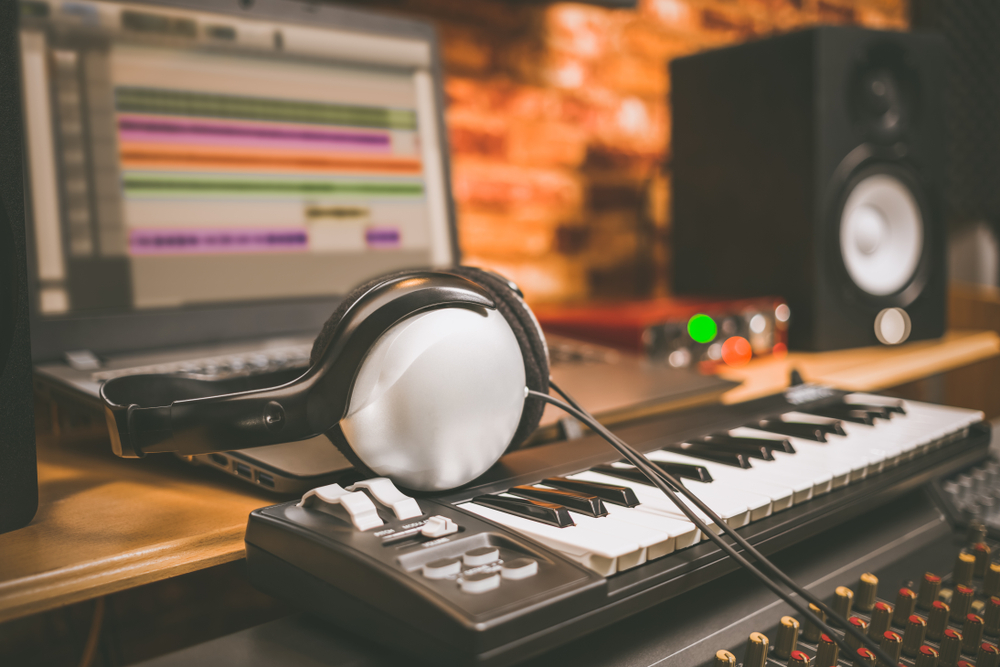
Mastery of MIDI, just like anything in the recording world, is a skill to be learned and developed. You can’t expect to be a master piano player in a day, and in the same vein, you can’t expect to master MIDI quickly.
Computer-aided recording also adds another dynamic, the fact that you can actively modify the sound and even modify it after the fact. While you’ll have to improve with trial and error, some of the tips below can help flatten the learning curve.
Work on Realism
As MIDI exclusively uses digital sounds, you’ve got to be careful to avoid ending up with a product that sounds like a robot created it. Shape your sounds carefully: in fact, we recommend that you record a human first as a reference track so that you can base your MIDI recording around the slight tempo and volume variations that we see with human recording. In this same vein, stay away from quantizing, a DAW effect that makes human-played music more ‘perfect.’
Take Advantage of Your Drum Pad
MIDI Keyboards like the Alesis VI25 25-key Keyboard Controller and the Arturia Keylab 88 MkII Fully Weighted MIDI Controller incorporate touch-based drum pads. While it’s not a complete drum set, drum pads help create natural-sounding percussion without the portability difficulties and restrictions of traditional percussion.
Careful with Instruments and Presets
One of the biggest advantages of MIDI is that it instantly allows you to access pretty much every instrument in the world. You also have access to thousands of presets that help you modify and adjust sounds.
But be careful with this privilege, as audio selection and processing are better done on a case-by-case basis. Compression, reverb, and more audio features shouldn’t just be toggled on and off: understand what each value for a preset does; only then should you use it on tracks.
Other Products for MIDI Music
While a MIDI keyboard and a computer are hypothetically all that you need for recording MIDI output, there are a couple of accessories that will make your life a lot easier. Consider splurging on some of the products below if you’d like to improve or expand your recording setup:
- Recording-Grade Headphones: Plenty of starting musicians record, mix, and master using a pair of entry-level headphones and then are surprised and disappointed when they realize the recording sounds different on a different sound system. A decent set of headphones helps musicians even out and adjust the mix properly.
- Piano Stand: In 99% of cases, we’d recommend a keyboard stand. Not only does it create a solid base to support your keyboard, but it also provides the advantages of an adjustable platform. They’re inexpensive and it’s a heck of a lot better than having your MIDI keyboard take up half of your desk.
- Cables: While (according to experts) the highest-end cables aren’t worth it, the difference between a dollar-bin cable and a mid-level one is noticeable. You don’t have to splurge here, but get something that will, at the very least, hold up.
Wrapping Up
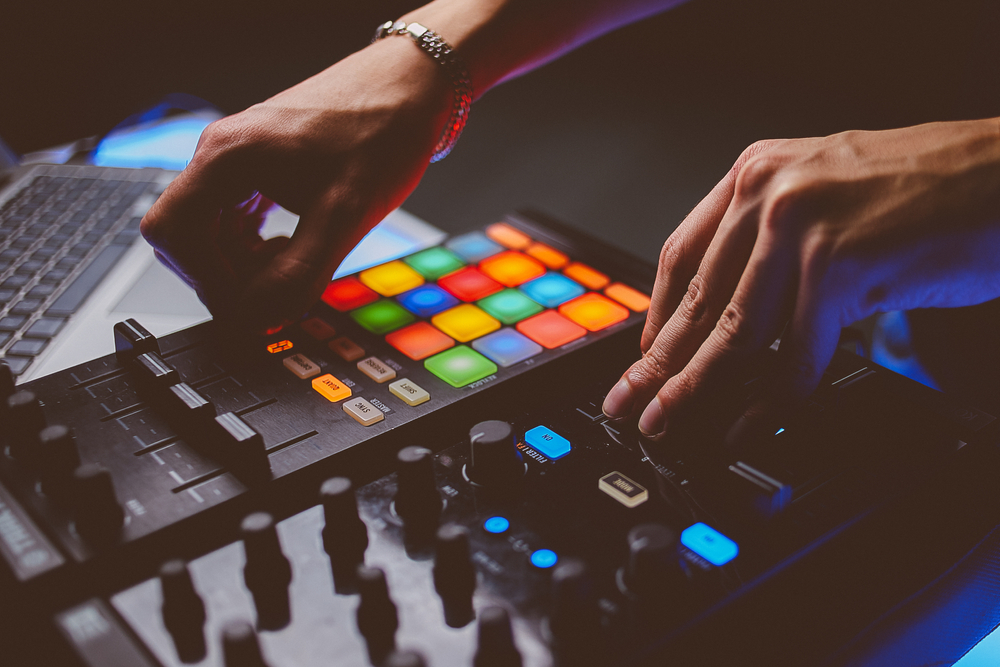
Any musician of any genre that does some recording should consider a weighted MIDI keyboard that can give them access to a virtual infinity of sounds, instruments, and ways to modify those sounds. When you pick the right instrument, you won’t end up just changing your recording setup, but changing your sound and recording capability entirely.




